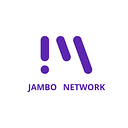Jambo Network’s distributed application ecosystem expands in the Web 3.0 environment
When Satoshi Nakamoto invented Bitcoin in 2009, people started to envision DeFi as an alternative to the traditional banking industry. More than a decade later, the technology behind Bitcoin is used to create an Internet that tries to fulfill the promises of the early days of the internet by using our collective computing power, data, and equipment to become much more powerful and flexible than today.
Internet environment-the business model of advertising profit
Calling the invention and the spread of the internet a success would be an understatement. It democratizes access to information, creates unlimited economic opportunities, and connects people all over the world. In the 1990s, less than 1% of the world’s population had Internet access. Thirty years later, it has risen to 59%. Today’s Internet contributes 10% of the US economy. It is undoubtedly one of the most important technologies ever.
But this rise came with a price. The Internet is no longer a decentralized and democratic information network as originally envisioned. It is more like an oligopoly controlled mainly by companies that control data within it. Large technology platforms know what we are searching for, who our contacts are, our preferences, etc. These companies use our digital identities to build profitable business models based on advertisements, gaining profits at the expense of user privacy.
This is the modern Internet we face. Although it is often convenient, users are increasingly unable to tolerate infringement of their privacy and data.
This development paved the road for the emergence of Web 3.0. Web 3.0 will realize a peer-to-peer network environment, putting personal property and privacy first, and where users will not have to waste time collecting and sharing data on intrusive websites.
How does Web 3.0 optimize the internet?
Blockchains provides an immutable record, so transparency and trust are built in its foundation. Based on the blockchain-based Web, users have the ability to control their data and privacy. This brings us to decentralized applications (DApps).
Traditional applications are attached to our mobile phones like barnacles, loaded with “middlemen” who manage and collect our information. There are many types of decentralized applications, but they all have one common feature, which is to eliminate unnecessary “middlemen.”
Using DApp users can directly connect to the final provider without the need for a “middleman”. This will create a user-centric, transparent Internet with Web 3.0, and will have the “user first” requirement for all its applications.
Dapp market potential-Jambo Network ecosystem expansion
Currently, DApps such as wallets, games, social networking, finance, etc. do not involve non-advertising business, which will become one of Jambo Network’s strategic expansions.
Through the Jambo Network cross-chain slot, advertisers and channel parties can choose a suitable advertising to publish with one click through the Jambo Network advertising protocol. The audience, the coverage area, the playback period, the number of playbacks, etc. are all recorded on the chain to create a new ecosystem of advertising media which will lead to the development of the blockchain advertising industry.
Jambo Network always puts the authenticity, traceability, and low cost of advertising information first, and will adopt a distributed system to avoid fraud and opacity in advertising. It also accurately depicts user portraits, presents the information that best meets user needs to users, brings accurate delivery of advertisements, minimizes unlimited playback, and combines diversified content such as live broadcasting, online shopping, consulting, and mini games to make advertising information no longer singular and boring, which greatly improves the user experience.
